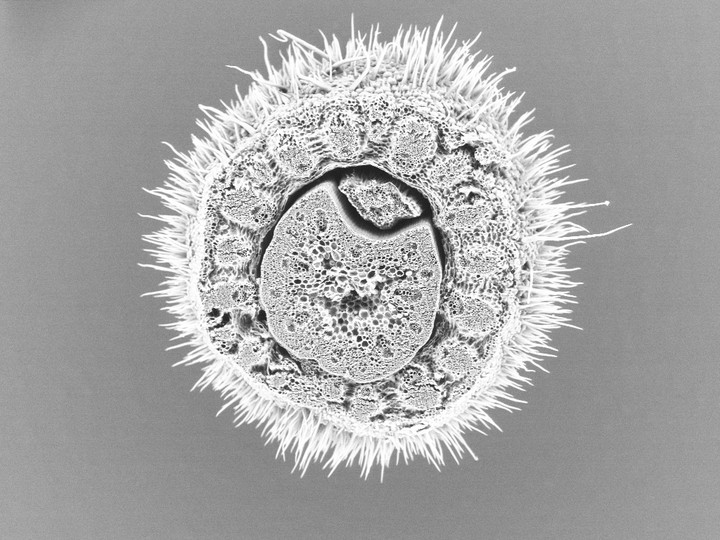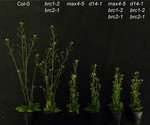Transcriptional targets in shoot branching
 Cross section of a Brachypodium distachyon stem. Image credit: Madeleine Seale
Cross section of a Brachypodium distachyon stem. Image credit: Madeleine Seale
Plants can develop in many different ways by responding to their environment, even when they are genetically identical. This means that they can display diverse forms and structures according to their surroundings. One example of this is the degree of shoot branching: flowering plants normally develop buds within the axils of their leaves that may grow out to form a branch, or may remain dormant - sometimes for the entire life of the plant.
This project aimed to understand how branches in Arabidopsis thaliana and Brachypodium distachyon can be activated or remain dormant. Several plant hormones are involved in regulating branch growth, such as auxin and strigolactone, as well as many genes that act together in a regulatory network. My research focused on a transcription factor called BRANCHED1 (BRC1), which was thought to be a major integrator of signals to inhibit branch development. We showed that, though BRC1 can often prevent branches from elongating, the gene is not always required for the inhibition of branching. Additionally, increasing the expression of BRC1 in isolation does not necessarily cause branches to stop growing.

